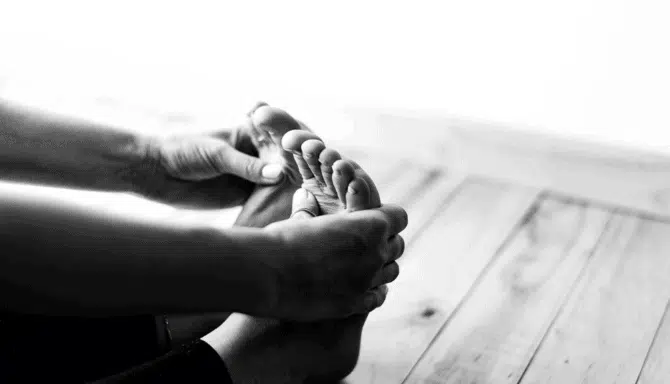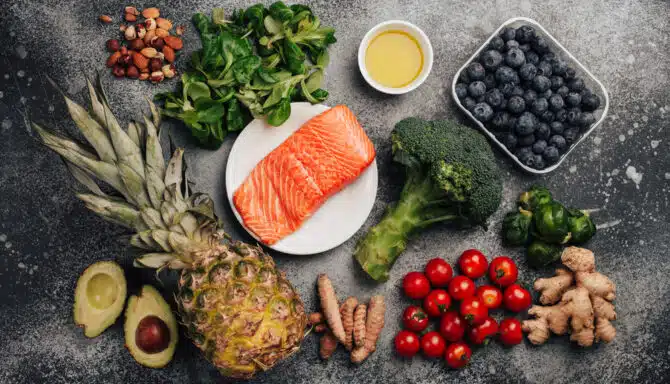Did you know that your knees absorb about one-and-a-half times your body weight every step?
As the largest joint in our body, our knees are essential to the overall health of our bodies. Knees act as a hinge joint and permits flexion and extension. Additionally, the knee allows for slight rotation both internally, and externally. Knees allow us to perform horizontal movements, like running or walking, and vertically, like jumping.
Because of our reliance on knees, and its complexity, they’re often the source of many foot conditions, either directly or indirectly. As the gateway between our thighs and lower legs, all muscles run through, or adjacent to the knee, meaning prevention is absolutely necessary for overall leg health.
If you do experience pain, below are four reasons for why your knee hurts:
Common conditions
Your Knee Hurts Because…Patellofemoral pain syndrome
Patellofemoral pain syndrome, also known as runner’s knee, is the most common knee injury. Considering its nickname, it should come as no surprise that many runners and athletes experience patellofemoral pain syndrome.
Patellofemoral pain syndrome is a relatively broad term for any pain in the front of your knee. In particular, the following activities may trigger pain:
- Walking up or downstairs
- Kneeling or squatting
- Sitting with a bent knee for long periods of time
There are a number of causes for patellofemoral pain syndrome including:
- Overuse. Repetitive activity can cause irritation under the kneecap. Running for extended periods of time, or through pain, is one common cause, as are sports that involve a lot of jumping.
- Muscle imbalances or weaknesses. Muscle imbalances can cause undue stress on your knees because of overcompensation. Additionally, weak hips can also cause your knees to taken additional loads off your body, which can increase the likelihood of injury.
Note that causes may also include acute injuries such as trauma or surgery.
Fortunately, treatment for runners knee can, for the most part, be done at home. Following the RICE method which includes rest, icing, compression, and elevation can be effective in keeping inflammation down and allowing your muscles to recover.
You can also try using a knee brace if you feel like your knee is not getting proper support.
In terms of prevention, there are a number of steps you can take:
- Strength training. Keep your muscles that lead to your knees is crucial. Working on strong quadriceps and hip muscles keep your knees better aligned and balanced. Ensure you perform each strength exercise slowly, with an eye on form, as your knee will likely otherwise compensate, which can cause pain in and of itself.
- Return from injury slowly. Now that you’ve rested, and iced, you’re ready to return to activity. But, your body may not be 100% ready to return to pre-injury form right away. Build up slowly, and make continuous checks of your knee to ensure you improve gradually. If you’re returning to running, follow the 10% rule which states that you should not increase your weekly mileage by more than 10% per week.
- Find the right shoes. Research the type of shoes you need for your foot type. You may be better off with motion control or stability shoes, or neutral cushioned shoes might be best. If you have any doubt, visit the clinic for a full gait analysis and we’ll put you into proper footwear.
- Warm-up. Perform dynamic stretches and light exercises before you exercise so your muscles are warmed up, and firing properly. Cold muscles can lead to poor form, and compensating in areas.
Your Knee Hurts Because…Patellar tendonitis
Patellar tendonitis is a common injury for why your knee hurts that affects the patellar, the ligament that connects your kneecap to the shin bone. The tendon allows the knee to straighten and is crucial in the overall health of your knee.
As with many knee injuries, patellar tendonitis is often seen among runners, and pain can worsen when using stairs, excessive use, and sitting for long periods of time. Approximately 25% of knee injuries are diagnosed as patellar tendinitis.
The following symptoms can be a sign of patellar tendonitis:
- Pain under the kneecap
- Inflammation and tenderness in the front of the knee
- Difficulty walking or doing sports activities
- Difficulty climbing or descending stairs
- Pain when bending the knee
Common causes of patellar tendonitis include:
- Trauma
- Increased training
- Weak quadriceps muscles
To treat tendonitis:
- Rest. If you’re a runner, cross-train by swimming, cycling, or using the elliptical to reduce the load on the tendon
- Ice
- Seek medical advice
Like many knee injuries, preventative methods include:
- Strength training
- Stretching your quads and hamstrings to reduce the pressure on the knee, and the patellar tendon
- Foam rolling
Your Knee Hurts Because…IT Band Syndrome
IT Band syndrome (short for Illiotibial band syndrome) is a common knee injury characterized by inflammation and friction of the IT band. The IT band runs along the outside of the tight from the pelvis to the tibia and is crucial as a stabilizer for the knee.
IT band syndrome arises out of overuse as the band crosses back and forth. This injury is particularly prominent in:
- Long-distance running
- Those who have increased hip internal rotation and knee adduction
- Cycling
- Weight-lifting
Although the IT band extends the entirety of the leg, pain is typically felt most common on the outside of the knee, and around 30 degrees of knee flexion.
IT band syndrome, although one of the most common running injuries, can be treated with physical therapy, as well as RICE (rest, ice, compression, and elevation).
Try the following preventative and treatment methods to keep IT band syndrome at bay:
- Anti-inflammatories
- RICE: Rest, ice, compression, and elevation
- Foam rolling: self-massage your IT band by applying pressure to it with foam rolling. Read more in our complete foam rolling guide.
- Stretching: focus on stretching your hips to help reduce tight muscles
- Strength training: focus on the gluteus maximus and hip external rotators. You can target these areas by using a resistance band and performing some of these daily foot exercises.
Your Knee Hurts Because…Osteoarthritis
Knees are susceptible to osteoarthritis, a type of joint disease that results from cartilage breakdown between bones. Osteoarthritis is often known as wear-and-tear arthritis since it’s commonly associated with overuse.
You may be at higher risk of osteoarthritis if you fall into any of the following categories:
- Age: many people 70+ have osteoarthritis
- Sex: women are more likely than men to suffer from OA, especially in the knees.
- Previous trauma: joint injury can change joint alignment and cause more overuse in certain areas
- Weight: increased weight will increase the load on the joints, causing the earlier onset of osteoarthritis.
- Biomechanics: deviations in the knee joints can cause excess wear on certain joint areas, for example, genu valgum (knees come inwards).
As osteoarthritis is a progressive disease, the effects will likely worsen over the years. But, that doesn’t mean you cannot delay the onset of pain.
Some common treatment options include:
- Physical activity: light activity keeps joints and muscles lubricated. If impact sports aggravates your injury, try swimming or another form of non-weight-bearing activity.
- Anti-inflammatories
- Soft surfaces: running on grass or on the treadmill can lessen the load of sports
WebMD has a useful self-assessment tool that can offer a glimpse into why your knee may be hurting. Of course, use the tool only for reference, and do not take it as medical advice.









